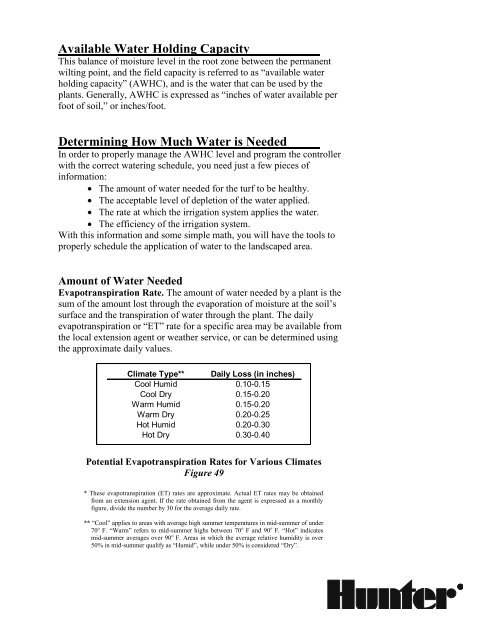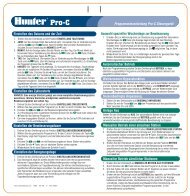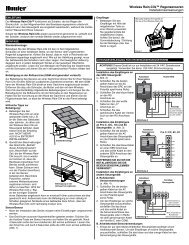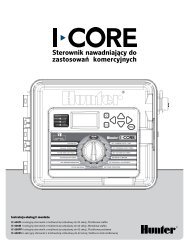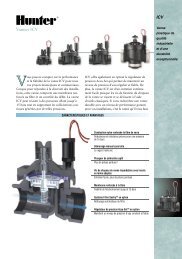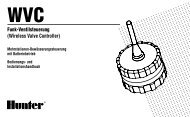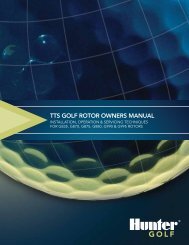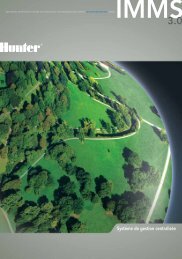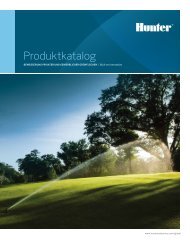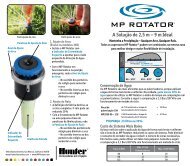Irrigation Professionals with questions about ... - Hunter Industries
Irrigation Professionals with questions about ... - Hunter Industries
Irrigation Professionals with questions about ... - Hunter Industries
Create successful ePaper yourself
Turn your PDF publications into a flip-book with our unique Google optimized e-Paper software.
Available Water Holding CapacityThis balance of moisture level in the root zone between the permanentwilting point, and the field capacity is referred to as “available waterholding capacity” (AWHC), and is the water that can be used by theplants. Generally, AWHC is expressed as “inches of water available perfoot of soil,” or inches/foot.Determining How Much Water is NeededIn order to properly manage the AWHC level and program the controller<strong>with</strong> the correct watering schedule, you need just a few pieces ofinformation: The amount of water needed for the turf to be healthy. The acceptable level of depletion of the water applied. The rate at which the irrigation system applies the water. The efficiency of the irrigation system.With this information and some simple math, you will have the tools toproperly schedule the application of water to the landscaped area.Amount of Water NeededEvapotranspiration Rate. The amount of water needed by a plant is thesum of the amount lost through the evaporation of moisture at the soil’ssurface and the transpiration of water through the plant. The dailyevapotranspiration or “ET” rate for a specific area may be available fromthe local extension agent or weather service, or can be determined usingthe approximate daily values.Climate Type** Daily Loss (in inches)Cool Humid 0.10-0.15Cool Dry 0.15-0.20Warm Humid 0.15-0.20Warm Dry 0.20-0.25Hot Humid 0.20-0.30Hot Dry 0.30-0.40Potential Evapotranspiration Rates for Various ClimatesFigure 49* These evapotranspiration (ET) rates are approximate. Actual ET rates may be obtainedfrom an extension agent. If the rate obtained from the agent is expressed as a monthlyfigure, divide the number by 30 for the average daily rate.** “Cool” applies to areas <strong>with</strong> average high summer temperatures in mid-summer of under70 o F. “Warm” refers to mid-summer highs between 70 o F and 90 o F. “Hot” indicatesmid-summer averages over 90 o F. Areas in which the average relative humidity is over50% in mid-summer qualify as “Humid”, while under 50% is considered “Dry”.


